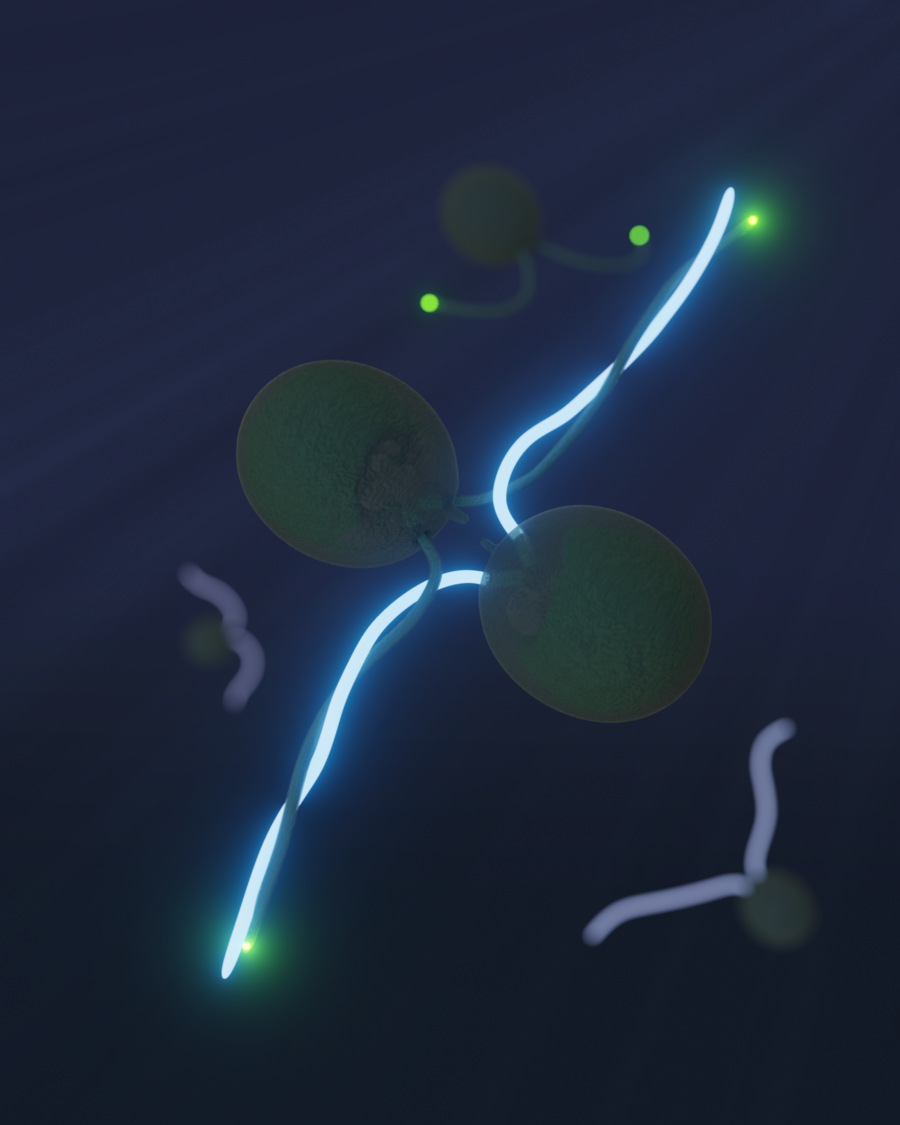
Illustration of mating Chlamydomonas cells with genetically encoded fluorescent cilia. Copyright: Adrian Nievergelt / MPI-CBG
The gene editing revolution CRISPR/Cas has reached the green alga Chlamydomonas, enabling scientists and biotechnology engineers to make near unlimited changes to the genetic code of one of the most important model organisms used to study and understand a wealth of important processes such as photosynthesis as well as diseases like infertility or polycystic kidney disease.
Scientists from the research group of Gaia Pigino at the Human Technopole together with colleagues at the Max Planck Institute of Molecular Cell Biology and Genetics (MPI-CBG) in Dresden, Germany, have now managed to refine the genetic editing process for Chlamydomonas to introduce new genes with the CRISPR/Cas method and have demonstrated their new process by directly attaching fluorescent proteins to a variety of structures in algal cells.
Chlamydomonas was used early on to understand the genome and the genetic sequence was first determined in 2003. Making genetic changes in this green alga has primarily relied on either mutation induced by UV radiation or forced integration of genetic fragments. Both of these methods are by nature random and therefore hard to control. The CRISPR/Cas technology offers a way to precisely target where new genes are introduced, but to date this revolutionary method has not worked well in Chlamydomonas.
The researchers have found that one of the most important factors to improve the process was the quality of the reagents used, especially the way that the new DNA is prepared before it is introduced into the cells. Lead author Adrian Nievergelt, currently located at the MPI-CBG, elaborates: “The methods we have used previously were not a problem as long as we relied on random integration, which works by a different mechanism, but once we started employing CRISPR/Cas editing the old methods no longer worked and we had to rethink the entire pipeline and build a new one from the best practices used with many other important model organisms like Zebrafish, Nematodes or Organoids.”
In the process of perfecting their technique, the authors of the study took the opportunity to modernise other parts of the genetic engineering work with Chlamydomonas, such as easier ways to make crosses of mutants or determining the presence or absence of genes in a much faster and more robust way than is common practice until now. The collection of improved methods will let scientists around the world perform a wealth of new experiments not previously possible and help make existing work easier, faster and more efficient. Ultimately this work could contribute to understanding human diseases or lead to improvements in biotechnology and agriculture. The authors published their genetic engineering toolbox in the journal Cell Reports Methods.
Nievergelt AP, Diener DR, Bogdanova A, Brown T, Pigino G. Efficient precision editing of endogenous Chlamydomonas reinhardtii genes with CRISPR-Cas. Cell Rep Methods. 2023 Aug 22;3(8):100562. doi: 10.1016/j.crmeth.2023.100562. PMID: 37671018; PMCID: PMC10475843.